Nanganallur can be called as the ‘Chinna Kanchipuram’ (சின்ன காஞ்சிபுரம் of சென்னை) due to the numerous temples it has in and around.The online map of temples in and around Nanaganallur is available
Sri Varasiddhi Vinayahar டெம்ப்ளே (ஸ்ரீ வரசித்தி விநாயகர் )
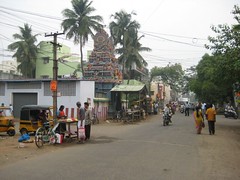

Sri Lakshmi Hayagreevar Temple

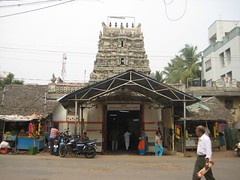

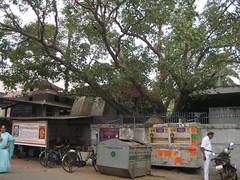
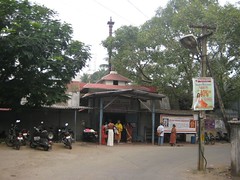
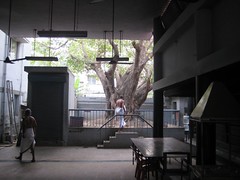
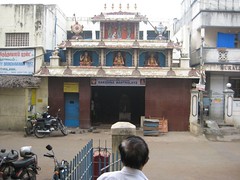




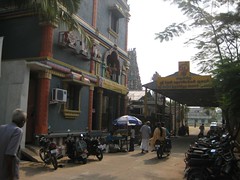
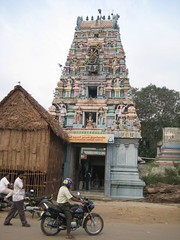
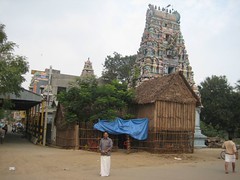



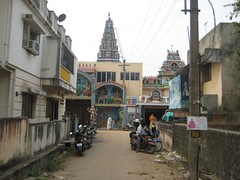

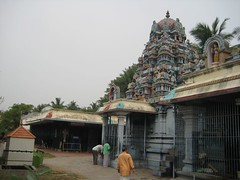
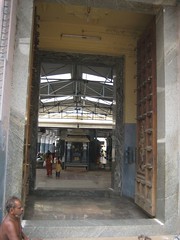
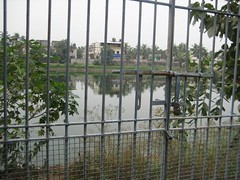
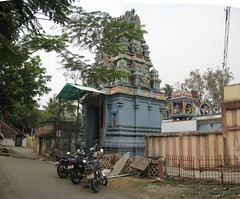
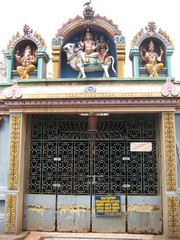
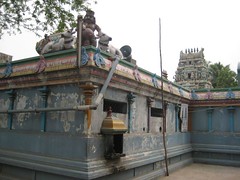

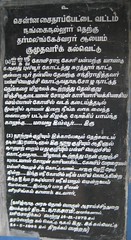
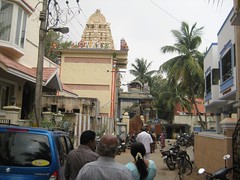
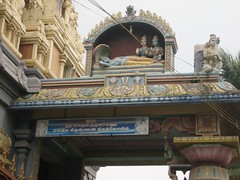

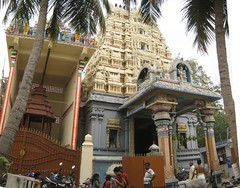

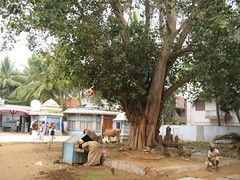
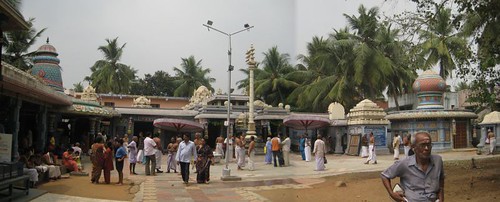
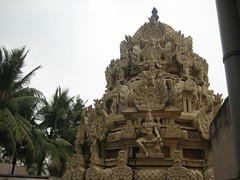
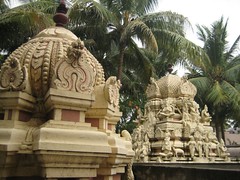

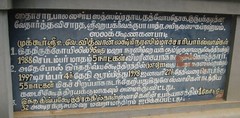
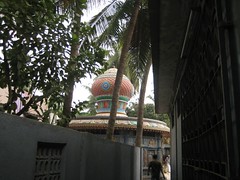
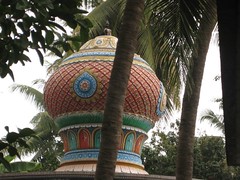
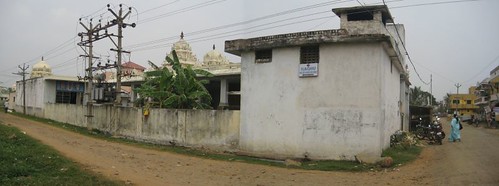
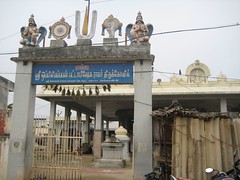
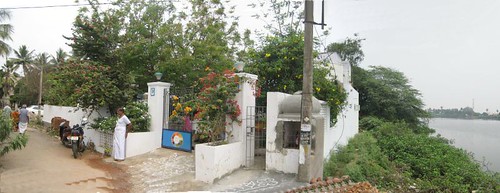
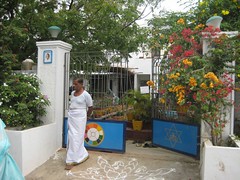
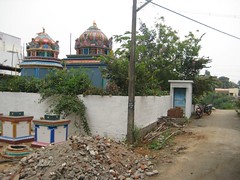
Sri Varasiddhi Vinayahar டெம்ப்ளே (ஸ்ரீ வரசித்தி விநாயகர் )
First stop was the Varasiddhi Vinayahar Temple located at Ram Nagar, Nanganallur 2nd main road. This is one of the oldest temples and Kanchi Maha Periyavar used to stay only here whenever he comes to Nanganallur.The Sandal paste abishekam was in progress and it is always a beauty to see the Lords in abhisheham, isitn’t? the previous day was the Sankatahara Chathurthi but it continued till the morning of that day. So, in effect we had the Sankatahara chathurthi dharshan at the most sacred place of Vinayagar at Nanganallur but without the usual Sankatahara Chathurthi crowd. What else once could ask for? and what a start! yenna oru aarambam ! ! !


Sri Lakshmi Hayagreevar Temple
This is very near to the Sri Varasidhi Vinayagar Temple and is one of the very few Hayagreevear temples of Tamilnadu. Hayagreevar is the God of Knowledge.


Sri Uthara Guruvayoorappan Temple
This is also very near the above 2 temples. The main deity here is very similar to the Guruvayoor deity. The temple is based on Kerala architecture and the kumbabishekam was performed in 1975.
Sri Bhagavathi amman is giving dharshan in a separate shrine and the idol is a feast to the eyes. Goddess Bhagavathi is ‘Deepa Swaroopam’ and represents the Trinity of Goddesses – Mahalakshmi, Saraswati and Durga. Devotees can offer a garland of bangles as an offering to the Goddess.
There are shrines for Sri Dharmasastha, Sri Prasanna Vinayaka and the Navagrahas. There is also a separate shrine for Lord Venkateswara. There is a huge Peepul tree (அரச மரம்) as the sthalavriksham and an idol of Sankarshana is installed beneath the Peepul tree in a separate enclosure. The arasa pradhakshinam with Sangharshana idol in the morning hours is considered very sacred.
Sriveli, a procession in which the Lord is taken to all the eight quarters of the temple to inspect the neiyvediyams of the Ashtadikpaalakaas is performed in a small chariot everyday at 8 AM and 8 PM. A unique feature of this temple is that the outer walls of the sanctum and sanctorum are fitted with brass lamps like in Guruvayur. During Ekadesi, Pournami, Rohini, Astami and special occasions, the lamps outside every shrine are lit.
Had an excellent dharshan. There were many families busy with their ritual activities for their kids. It was nice to see many beautifully dressed up babies/ kids
Temple prasad of hot Pongal here.




Srimad Raghavendra swami டெம்ப்ளே (ஸ்ரீ ராகவேந்திர சுவாமி கோயில் )
This is located very near the Anjaneyar temple and is known as the Dhakshina Manthralayam. The sacred spot houses the Mithrika brindhavan of Sri Raghavendhra Swamy. The meditation hall just opposite across the road has His huge image that gives immense peace for the heart and mind of the devotees.


Sri Anjaneyar Temple (ஸ்ரீ ஆஞ்சநேயர் கோயில் )
This is the most popular temple of Nanganallur and the Nanganallur town is very much identified with this temple.
The barricades installed within the temple first take us to the Vinayakar and Nagar installed on separate platforms. Then we are guided to the Kothanda Ramar shrine. Shri Rama, Lakshmana and Seetha were in captivating alankarams facing east. I don’t find words to express my feeling and the beauty of the Lords and it took me a while before I moved further. Sri Sivan’s tour notes also expressed the very same sentiments.
After that we enter the main shrine of Adhivyadhihara Bhaktha Anjaneyar. Adhivyadhihara means, “the extinguisher of the first disease of man” namely “Karma” and the diseases which the man goes through because of that Karma. The Anjaneyar facing West is of 32 feet high carved out of a single rock, i.e., monolithic. This is an ever haunting place for devotees especially on Sundays but the crowd doesn’t matter really because we can easily get the dharshan of the 32 feet Anjaneyar from any distance, from anywhere inside the temple.
On coming out of Anjaneyar shrine, we come to the shrine of Lord Krishna with Rukmani and Satya Bhama, all facing East. A ‘thulam’ (weighing balance) has been erected for offering ‘thulabaram’. A Sannidhi for Lord Krishna is rarely seen in Anjaneya temples. A temple of Krishna here reminds us that among the Gods it was only Anjaneya who was present in both the Indian epics, i.e., in Ramayana, as a direct disciple of Rama and in Mahabaratha, in the flag of Arjuna’s Chariot as ordained by Lord Krishna to save it from destruction by the opponents.
The temple work was started in 1989 with the blessings of Sri Ragavendra swami and Sri Kanchi Paramacharyar. The great Paramacharya took the stone on his head to offer his blessings. and the Kumbabishekam was consummated in 1995.
The temple is always buzzing with the activities of homams, archanas and sevas by bhakthas and volunteers at different corners of the temple. The very unique feature of this temple is the continuous distribution of Prasadam during the temple hours, which changes hourly according to the offering given to the Lord.
Sri Ayyappan Temple (ஸ்ரீ ஐயப்பன் கோயில் )
Sabarigirisan temple just behind Anjaneya temple is a typical Kerala sampradaya temple for Ayyappan. The idol in sanctum sanctorum could be comfortably viewed on the mirror from both sides of the sannidhi during crowded hours.

Sri Lakshmi Narasimhar Temple (New)
Sri Lakshmi Narasimhar on the first floor of the temple in 24th Street of Thillaiganga nagar is the recent addition to the list of temples in Nanganallur. The Lord blesses here with His Consort, in santha roopam under the umbrella of the five headed snake. We were just in time to have the last few minutes of the Thirumanjanam. It was really nice to have the dharshan of the beautiful Lord and the Goddess during Thirumanjanam. There is also Lord Dhanvandhri in a separate shrine here.
Panagam and Curd rice as prasad here, the third of the morning.
Contact: Ph – 22329099
Contact: Ph – 22329099



Sri Devi Karumari Amman டெம்ப்ளே (ஸ்ரீ தேவி கருமாரி அம்மன் கோயில் )
This is just the adjoining temple to Sri Lakshmi Narasimhar. Lord Srinivasar (Balaji) gives beautiful dharshan in a separate shrine at the entrance itself. We could not have the dharshan of the Karumari Amman since the screens were on after the abhishegam. The temple faces the new highway laid recently for connecting Velacheri with the GST road at the Thillaiganganagar point.



Sri Raja Rajeswari and Sri Lakshmi Sametha Sathyanarayana Perumal temple
Located at ThillaiGanga Nagar, this very powerful, ancient, beautiful and popular temple unfortunately is located in a typical 2 tiered house in a narrow street. If you go by car, better park it in main road and do a little walk.
Sri Lakshmi sametha Sathyanarayana Perumal temple is on the ground floor of the Raja Rajeswari temple. Those who are unable to do Sathyanarayana Pooja at home can participate in the pooja here to get the benefit. Sri Lakshmi normally seen by the side of Perumal is present here at the chest of Perumal who is in a standing posture facing west. Navagrahas, normally not seen in Perumal temples are seen here in a straight line which is unique. Panchamuga anjaneyar is also present here.
Because of the presence of Raja Rajeswari temple, this place was called Nangai Nallur once and later became Nanganallur. It is said that the main deity here came up from a Homa kundam. The devotees should go around the temple only in anti-clockwise direction. 43 Yantras of Shakti deities are installed in the temple and there are 16 steps to this sanctum sanctorum each signifying a special meaning. Sanganidhi and Padmanidhi bless the devotees at the entrance of the steps.



The best thing about this temple and the other Keralite temples here – Sri Guruvayoorappan and Sri Ayyappan temple were the absence of the artificial lights in the sanctum sanctorum. Lot of kuthuvilakku deepams are lit so that the devotees can have a comfortable and well lit dharshan of the Lords. I always hate to see the Lords under focus lights and so enjoyed the dharshan in all these temples, especially here, since we can have a very close dharshan of Sri Rajarajeswari amman and also She was dressed up very beautifully.
(It is appropriate to mention here my experience at the Vaidheeswaran temple near Kumbakonam. The garbagraham there had neither artificial lights nor sufficiently lit deepams. Additionally we had to see the Lord from quite a distance. So literally we could see only the outline of the Lord and nothing more. In spite of the temple being so popular and so crowded, even the basic requirement of showing the Lord in good lighting was not understood by the concerned people. Whereas, being a parihara sthalam, you can see many gurukkals engaged in buzzing activities of various parihara poojas at various places of the temple. It was a very disappointing dharshan of the Lord there, totally contradicting to the one we had here at Nanganallur.)
Sri Ardhanareeswarar and Sri Ashtabhuja Durgai Temples
It is located near the Pazhavanthangal railway station in the 4th Main Road. One has to be very careful while crossing this bazaar road of Nanganallur as this is the main artery but narrow and encroached by shops on either side. Added to it, the fast moving indisciplined road users in four wheelers and two wheelers, not to speak of the cows and bulls.
In the 1960s, the Paramacharya of Kanchi Kamakoti Peetam discovered this ancient temple when he was performing a morning puja at the abandoned temple tank here. He spotted an ancient Lingam in the tank as “Ardhanareeswarar”. Since then the temple was functioning in thatched sheds and the Kumbaabhezam took place in March 2004. This temple is also a “Kethu sthalam”.(கேது ஸ்தலம் )
The temple tank has been deepened, compounded and maintained giving an excellent view.
A life-size idol of Sri Ashtabhuja Shanthi Durga, said to be bigger than that of ancient Patteeswaram temple near Kumbakonam is installed in a separate shrine just at the rear of the Ardhanareeswarar temple. The well sculpted durga is a please to the eyes of the devotees and is well known as sarvabhishta pala nayaki.
can see lot of well maintained cows inside the temple.




Sri Dharmalingeswarar Sempon Kovil
Semponkoil Dhanmeesar (Dharmalingeswar temple) in south Nanganallur is an ancient temple of Pallava times that dates back about 1000 years. There is a stone edict declaring this temple having been constructed by a district chief under the Pallava King. The temple was unearthed during the digging up for a house construction.
The principal deity is Lord Shiva in the form of Dhanmeesar. The temple has a three tiered gopuram. There is a separate shrine for Goddess Sarvamangalambikai. The Navagrahas, Bairvar and Anjaneyar are seen in the inner prakaram and Vinayagar is enshrined in the outer prakaram.
Rajagopuram on other side is under construction.





Sri Navaneetha Krishnan Sri Lakshmi Narasimhar Temple (Old)
This is located in the Sarva mangala nagar.
As the historical researches have revealed, the small place of Nanganallur had existed even during the 8th century A.D., It was also chosen by the Pallava monarchs of Kanchipuram as a site for a number of sprawling Vishnu temples. Several artifacts had been excavated that include a beautiful stone image of Lord Narayana, about five and a half feet in height portrayed in a typical Pallava style. An image of Goddess Bhudevi, with a bell, a plate and a lamp is extremely captivating. The metal bell found here with the imposing image of Goddess Bhudevi is a unique one, since the top of the handle contains the images of Sudarsana (the discus of Lord Vishnu) and Panchajanya (His conch) one inlaid within the other. Normally they are found on either side of the top portion of a bell. An inscription in Tamil datable to the 10th century A.D. discovered at this ancient place has the detailed description of the registration of the gifted land for meeting the expenses of lighting two lamps everyday.
The main sanctum, facing east enshrines the imposing image of the principal Deity, Lord Lakshmi Narasimha. The other murtis, which adorned the beautiful main sanctum are those of Lord Pradosha Narasimha, for whom special worship is performed during every pradosha and Sri Chakrattazhvar (Sudarsana). Also seen here are images of Sri Vishvaksena, Svami Nammazhvar, Sri Ramanuja and Sri Vedanta Desika. An interesting and rare architectural feature of this sanctum is a circular shaped pillar which resembles a stambha from which Lord Narisimha emerged to protect His child-devotee Prahlada.
The shrine housing the image of Lord Sri Sudarshana with Lord Narasimhar at the back is designed like a chariot, circular in shape. The vimana is one of the chief interests about the temple and is known as Veda chakra Vimana. Interestingly, the “prayoga chakra` (the discus held by Lord Narayana just prior to release) of an old Pallava Vishnu image which was earlier excavated here, has been installed in front of the Chakrattazhvar shrine, which has enhanced the traditional grandeur of the temple. This exceptional Vishnu image is properly mounted on a small structure, enabling devotees to actually touch it and pray for their wishes.
Apart from the above mentioned sub shrines, there is another significant sanctum stationed in this temple, which is dedicated to Lord Navaneeta Krishna. Here, the main image holds a ball of butter in His right hand while His left hand holds the conch (சங்கு). Lord Navaneedha krishnar magnetises the devotees with his teasing smile. It is interesting to note that the shrine for Lord Krishna is octagonal (eight-sided) in shape. The myths and legends associated with the temple reveal that the octagonal design of the temple has a special significance. According to these stories since He was the eighth child of Vasudev and Devaki, the shrine dedicated to the Lord is octagonal in design.
Also erected in this temple is a separate sanctum for Lord Srinivasa, whose image is guarded with the tall dvajastambha. It is venerated as the gift from the Tirumala Tirupati Devasthanam.
There is a sanctum dedicated to Lord Kothandarama with Sita Devi, Lakshmana and Hanuman. Directly in front of Lord Rama`s shrine and inside the prayer-hall is erected a small image of Hanuman called Bhaktakoti Anjaneya. The devotees are permitted to offer and apply dabs of butter on the image, while praying for the fulfillment of their wishes. So, the Anjaneyar here is seen always with butter alankaram. Just outside the prayer-hall and facing the shrine of Lord Rama is the sacred sanctum dedicated to Sanjeevi Anjaneya with His right hand held aloft.
A significant feature of the temple is that there is also a separate sanctum for Azhwars with exclusive cubicle for each Azhwar in a neat row.
Lakshmi Narasimha Navaneetha Krishna Temple has many antique sculptural pieces which enhanced the scenic beauty of the temple precincts. There is a beautiful circular chamber of mirrors (கண்ணாடி அறை) with a beautiful and unusual gopuram that adds a charming view to the temple. The decorated images of the Lord are taken on special occasions near these mirrors. Inside the chamber there are erected four pillars carrying the image of Lord Narasimha. Throughout the entire length of the wall there are a series of mirrors reflecting the images. Apart from these, pictures of the deities of 108 Divya Desams adorn the walls. The paintings of the walls are outstanding and depicting the thirty pasurams of the Tiruppavai. Pictures of some Divya Desams are found on the external wall, thus making the chamber really a `House of Art`. The inner chamber is fitted with strategically placed, large-sized mirrors, which give the viewer a multi-reflection of the images of the deities placed within.
Sri Lakshmi Nrisimha Navaneeta temple apart from being a sacrosanct is also the specimen of the architectural skill of the contemporary artists. As a whole the temple is a symbol of antiquity.
The day we went was the day of once-a-year Annakkoodai annual festival (Masi Chithirai) at the Lakshmi Narasimhar shrine. When we went, here again, the Thirumanjanam was taking place and we had a wonderful dharshan.













Madipakkam Oppliappan Temple
Madipakkam to visit the Oppiliappan temple enroute to Kaiveli on the Madipakkam-Velacheri road. Again, in this temple also, the abhishekam and aradhanai was in progress. We had the dharshan of the main deity. Sri Ramar in Pattabhisheka kolam is in the adjacent shrine.
The official website of the temple is here.


Sri Aurobindho and The Mother Meditation Centre and Gayathri Temple at Madipakkam
Next to the Petrol bunk on the Madipakkam-Velacheri main road and alongside the Puzhuthivakkam lake, in Madipakkam, is the small and beautiful Dhyana mandapam of The Mother of Pondicherry. The fragrance of the various flowers, the silence of the environment and the enchanting smell of the incence in the mandapam add to the vibration one gets in the presence of the eyes of the Mother looking at you. Unlike the other meditation centres in the city, significantly here, a Samadhi is present like that of Pondicherry Ashram. A few minutes of meditation is enough for one to recharge himself.
Within the same complex, a Gayathri Devi temple is also present with two small shrines one for Vinayagar and the other for Gayathri Devi.



Of course, there are plenty more temples in and around நங்கநல்லூர்.
நன்றி : தகவல் : ஸ்ரீ சிவன் & வெங்கடேஷ்

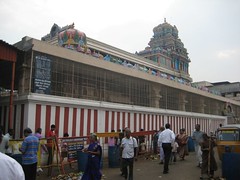
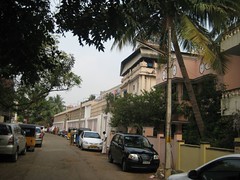
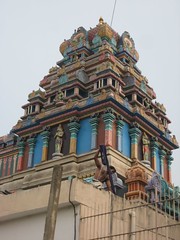
Hi there, awesome site. I thought the topics you posted on were very interesting. I tried to add your RSS to my feed reader and it a few. take a look at it, hopefully I can add you and follow.
ReplyDeletePoojas and Pariharas
Thanks Suji Priya...
DeleteExcellent Blog. You may also check:
ReplyDeleteYoga Classes in Nanganallur
Yoga Program offered in Nanganallur
Yoga Classes for Pregnant Ladies in Nanganallur